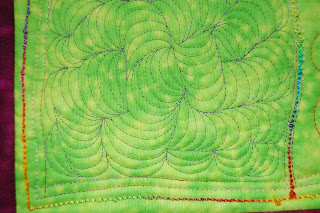Doodling is so helpful in teaching hand/eye/brain coordination when it comes to sitting down at the sewing machine to free motion quilt. I like using a white board so I can doodle and erase. Try it as a warm up and you'll feel more confident with the needle and thread.
Now it's back to school! Which means I have time to pull out all the fabric stored in various places and really see what's there...plan projects...organize...
Here's Baby Squid on her first day of high school! It was orientation day yesterday for the freshmen and today everyone is back.
I'm looking forward to being back into the routine that fall brings. In addition to school, Hannah is busy with running XC and rehearsing for a show at Northwest Children's Theater.
Becca started college a couple of weeks ago and is excited for this next phase of life. We enjoyed moving her into her dorm room and exploring a bit of Montana.
We got the lovely duvet cover (top bunk) from Ikea and amazingly her roommate chose similar colors. Really brightens up the room!
The summer was rounded out with both our anniversary celebration and Martin's birthday. Here we are enjoying some Red Velvet cake with our neighbors, George & Rae.
As the seasons change, I look forward to the beautiful colors of Fall and am reminded of walking around Seattle with Sarah and collecting leaves. I'll have to check out the trees in Eugene when we take David to school soon. Life is rolling along. Let's get back to quilting while we're at it!
Copyright ©2012, Sharon Baggs


















































